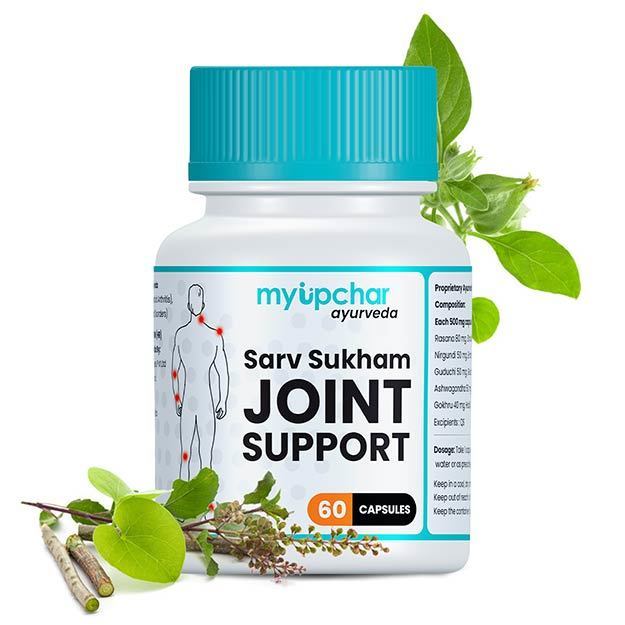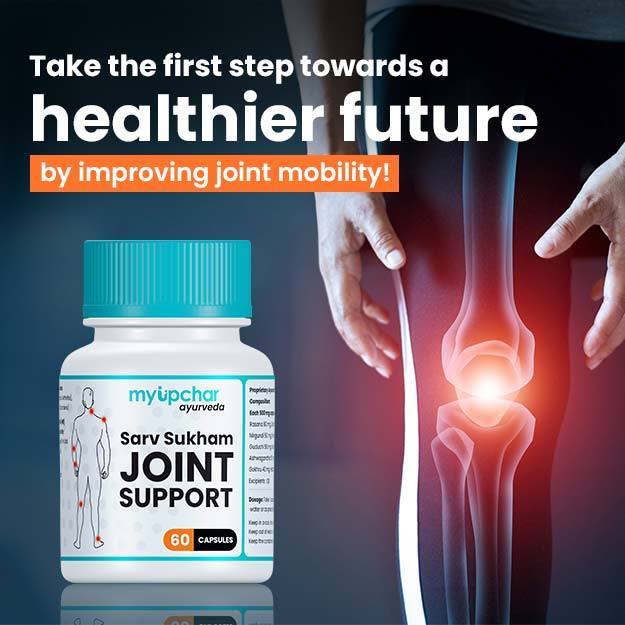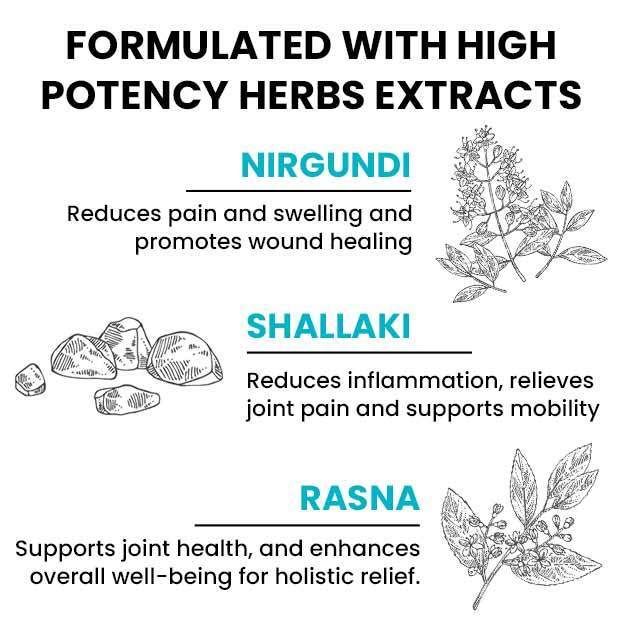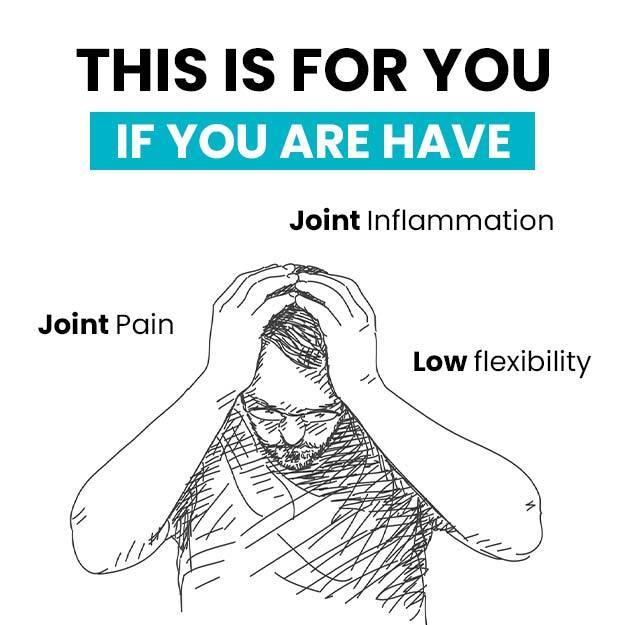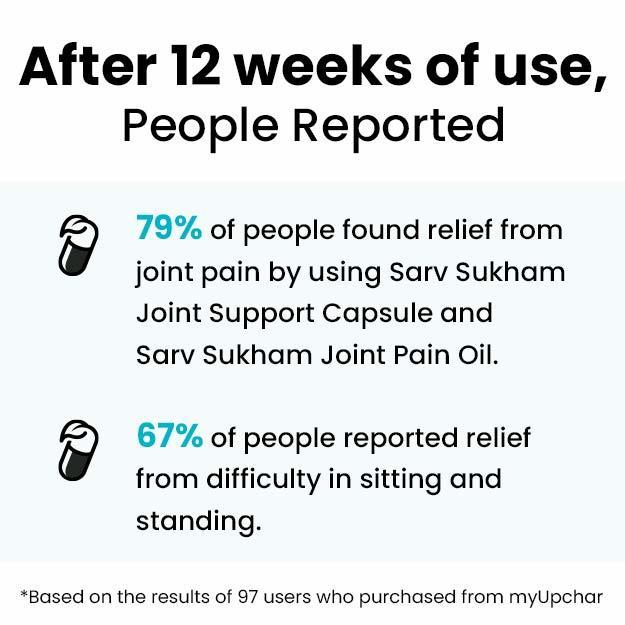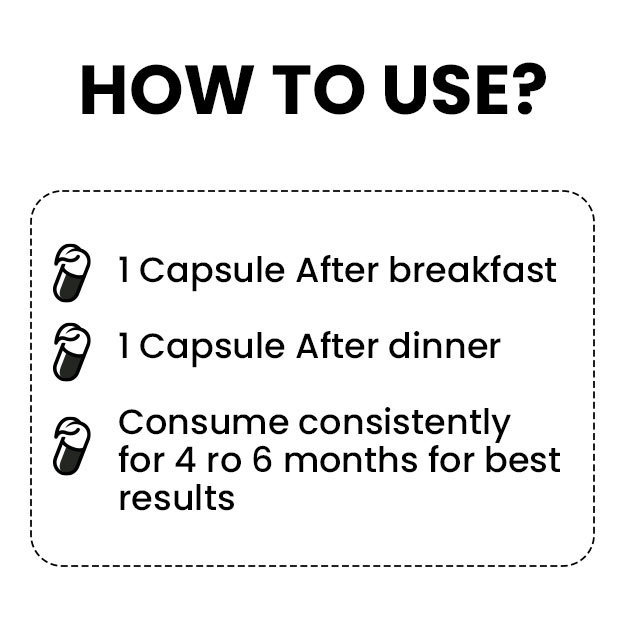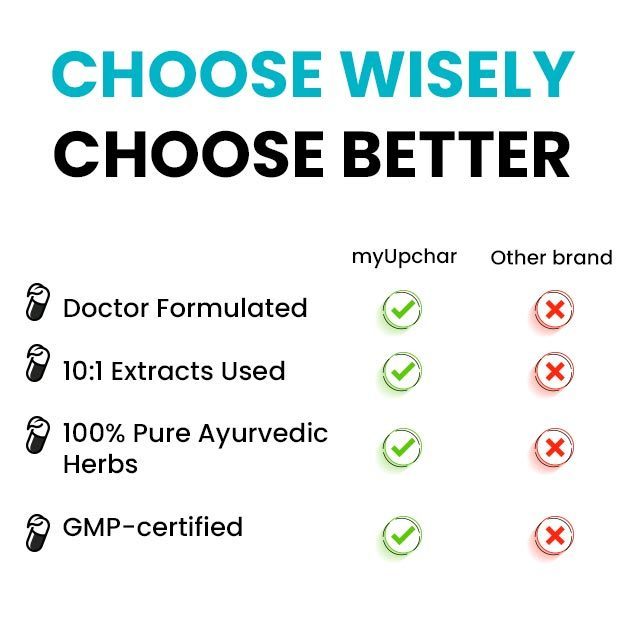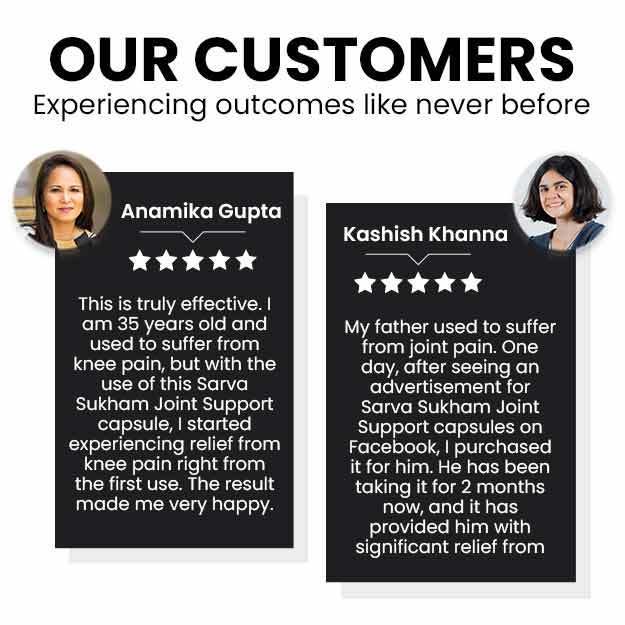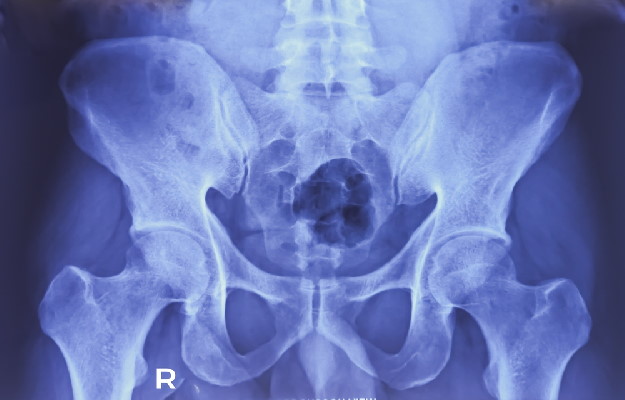Arthralgia, commonly referred to as joint pain, is called sandhishoola in Ayurveda. Some of the common causes of arthralgia are arthritis and injuries like strains and sprains. Pain in one or more joints may also be an indication of bursitis (inflammation of the fluid-filled sac called bursae in your joints), osteomyelitis (bone infection), and some types of fever. In elderly individuals, joint pain is most commonly due to osteoarthritis. There are other types of arthritis, i.e., rheumatoid arthritis and gout which can also lead to pain in the joints. Apart from pain in the joints, arthritis also causes inflammation, swelling and stiffness in the joints, thereby, affecting the movement of the affected joint.
Ayurvedic doctors prescribe treatments like nidana parivarjana (avoiding the causes), abhyanga (oil massage), swedana (sudation or sweat therapy), virechana (purgation), basti (enema), lepa (coating the affected body parts with medications) and agni karma (thermal cauterisation) for arthralgia. Herbs that are effective in treating joint pain include shallaki (Indian frankincense), rasna (Indian camphorweed), shankha (conch), shunthi (dried ginger), rasonam (garlic) and ashwagandha (Indian ginseng). Medicines used for treating arthralgia include muktashukti bhasma, yogaraja guggulu, simhanada guggulu and dashmoolarishta.
- Ayurvedic view of arthralgia
- Ayurvedic treatment for arthralgia
- Ayurvedic herbs and medicines for arthralgia
- Dietary and lifestyle changes for arthralgia patient as per ayurveda
- How effective are ayurvedic medicines and treatments for arthralgia
- Side effects and risks of ayurvedic medicine and treatments for arthralgia
- Takeaway
Ayurvedic view of arthralgia
Sandhishoola or pain in the joints may occur due to multiple reasons. As per Ayurveda, some causes of sandhishoola are:
- Osteoarthritis: Also called sandhivata, is a painful condition that may involve one or more joints. Swelling and friction between bones and cartilage may or may not be present. It causes accumulation of excess vata in the joints, leading to joint pain.
- Rheumatoid arthritis: Also called amavata, is a condition in which ama (toxins) get accumulated in joints leading to pain and swelling. It also affects the rigid joint at the back of the pelvis and is commonly associated with loss of appetite and fever.
- Gouty arthritis: Also called vatarakta, is a condition in which vitiated vata and rakta are responsible for pain in the joints.
- Degeneration of bones: Joint pain caused by dhatukshaya (degeneration of the bones), e.g., osteoporosis, causes sandhi shaithilya (loosening of the joints), asthibheda (injuries or fractures in the bones), rukshata (dryness), delayed healing of fractures, deformities like scoliosis and kyphosis.
Ayurvedic treatment for arthralgia
- Nidana parivarjana
- Nidana parivarjana is a vital step in the management of all kinds of diseases. It mainly involves avoidance of the causative factors responsible for the condition. It helps in prevention, progression and relapse of the disease.
- Based on the causes of joint pain, various methods can be used to prevent further vitiation of doshas and manage the pain. These methods include anashana (fasting), pramitashana (eating limited foods), alpashana (eating less quantity of food), langhana (fasting), and ruksha annapana sevana (eating dry foods).
- Abhyanga
- Abhyanga therapy involves massaging the affected body parts with herb-infused oils. The oil used for the process of abhyanga varies depending on the clinical condition of the individuals and a combination of herbs can be used for this therapy.
- It helps in carrying nutrients to and ama from the affected parts, thereby, relieving pain.
- Abyanga has numerous benefits like nourishing the body, preventing ageing, reducing fatigue and stress, and stimulating the immune system.
- Swedana
- This is a therapeutic procedure that involves the induction of sweating to remove toxins from the body. In case of arthralgia, sweating is induced by various means such as upanaha, wherein, a hot poultice is applied over the affected joints. The poultice is made of a variety of herbs that are selected on the basis of the cause of the pain. Upanaha is one of the best therapies for correcting vata disorders.
- Application of heat leads to liquefication of ama and widening of body channels, this ama is then expelled from the affected joints along with sweat, thereby, relieving pain.
- Basti
- Basti is primarily used for treating vata disorders. It is an Ayurvedic enema therapy, in which, various herbs and their combinations are used for cleansing the entire length of colon, rectum and anus.
- It clears ama from the body and relieves the symptoms of pain. Basti is useful in gout, rheumatism, osteoporosis, osteoarthritis and lower back pain.
- It is not recommended in individuals with rectal bleeding, fever, and polyps and is inadvisable for small children.
- Virechana
- Virechana involves clearing of the bowel by using certain herbs and their combinations. Through bowels it helps expel ama from the body, which is responsible for most of the diseases.
- Purgatives like senna and aloe are used in virechana therapy to cleanse bowels, decongest bile and clear the obstructions to bile flow. Virechana is not recommended in vata diseases as it causes weakening of the digestive fire. It removes the excess pitta in the body and is also recommended for kapha disorders.
- It is not recommended to be used in individuals with rectal ulcers and diarrhoea. It should also be avoided in the elderly and the weak, and in pregnant women.
- Lepa
- Lepa is the application of a semisolid formulation consisting of various herbs on the affected areas. It is an easy way to reduce inflammation, pain and swelling.
- Different herbs are used to prepare a lepa depending on the condition and the symptoms. For example, dashmoola and milk plaster helps in the management of acute pain. Addition of ghee to the lepa is useful in the management of rheumatoid arthritis.
- Agni karma
- Agni karma is the application of fire on the affected area using a special instrument. During this procedure, the most painful part of the joint is burned using heated equipment.
- The affected area is cleaned with sterile gauze before the agni karma procedure. After therapy, ghritakumari (aloe vera) pulp is applied to relieve the burning pain.
- It is especially useful in the management of pain and inflammation in osteoarthritis.
Ayurvedic herbs and medicines for arthralgia
Ayurvedic Herbs for Arthralgia
- Rasna
- Rasna contains various phytoconstituents like flavonoids, triterpenoids, lactones, and sterols that are useful in the management of numerous diseases.
- This plant is known to have anti-arthritic and anti-inflammatory (relieves pain and swelling) properties. This makes it useful in people with inflammatory diseases and bone-related conditions like osteoarthritis.
- Rasonam
- Rasonam (garlic) acts on the circulatory, nervous, reproductive, digestive and respiratory systems.
- It has a rejuvenating effect on nerves and bones and clears ama from the blood and lymph. It is useful in the management of rheumatoid arthritis, oedema and vata fevers.
- Ashwagandha
- Ashwagandha acts on the nervous, reproductive and respiratory systems and has potent immune-boosting properties.
- It is useful in the management of muscle weakness as it promotes tissue healing. Ashwagandha is also useful in the treatment of swellings experienced in arthritis.
- It should not be taken in case of cough and chest congestion.
- Shallaki
- Shallaki is a popular herb primarily used in the management of pain and stiffness in the joints in case of rheumatoid arthritis and osteoarthritis. This is because it contains bioactive supossess that posseess anti-inflammatory and analgesic properties.
- It pacifies vata dosha and aids in treating conditions caused due to an imbalance in the vata dosha.
- Shallaki also strengthens joints.
- Shankha
- Shanka destroys excessive kapha and pitta.
- It has high calcium content, which helps improve bone mass and strength, making it a herb of choice in the treatment of joint pain due to the deficiency of calcium.
- It also has properties like deepana (increasing hunger) and pachana (digestive). Improving the overall health of the body.
- Shunthi
- Shunti acts on the digestive and respiratory systems and has pain-relieving, expectorant (expels phlegm), and carminative (relives flatulance) properties.
- It is considered as one of the universal drugs as it can be used in the treatment of any diseases caused due to the vitiation of vata, pitta and kapha.
- Shunti is a natural anti-arthritic. It relieves pain and inflammation. Also, it helps prevent loss of bone mineral density.
Ayurvedic Medicines for Arthralgia
- Muktashukti bhasma
- Muktashukti bhasma is an Ayurvedic medicine prepared from mukta and shukti bhasma, made from the ashes of a pearl and its shell respectively. It aids in balancing the vitiated vata and pitta doshas.
- Mukta bhasma strengthens the weakened dhatus by nourishing them. The asthi dhatu is primarily nourished by muktashukti bhasma; thus, it acts as an effective remedy for diseases of bones and joints, which are caused by a weak asthi dhatu Mukta bhasma also nourishes the rakta and mamsa dhatu and strengthens the body. Scientifically, it is high in calcium. So, it can be useful in the management of joint pain caused due to calcium deficiency.
- In addition to its usefulness in arthralgia, Muktashukti bhasma is also helpful in the management of sunstroke and headaches.
- The properties of shukti bhasma are similar to mukta bhasma. However, shukti bhasma has the additional benefit of providing strength and even distribution of nourishment to the entire dhatu sequence. It mainly acts on the rakta, rasa, asthi and mamsa dhatu.
- Yogaraja guggulu
- Yogaraja guggulu is made of many herbs such as chitraka (leadwort), pippalimoola (long pepper roots), parsika yavani (stinking nightshade), vidanga (false black pepper), rasna, gokshura (small caltrops), twak (cinnamon), guduchi (heart-leaved moonseed), guggulu (Indian bdellium-tree), shatavari (hundred roots), etc.
- It helps in the management of all kinds of vata diseases, especially in rheumatoid arthritis. In chronic rheumatoid arthritis, mahayogaraja guggulu works the best.
- It is also useful in gouty arthritis where the imbalanced vata vitiates rakta dhatu.
- Yogaraja guggulu pacifies vata dosha as well as eliminates the ama from the body. The latter being one of the major causes of arthralgia.
- Thus, this medicine relieves joint pain by managing many conditions like rheumatoid arthritis, gout, and osteoporosis that affect the bones and cause pain in the joint. It also provides calcium to the body and relieves pain due to calcium deficit.
- Simhanada guggulu
- Simhanada guggulu is prepared from a formulation of vibhitaki (belleric myrobalan), shuddha guggulu (pure Indian bdellium-tree), amalaki (Indian gooseberry), shuddha gandhaka (pure brimstone), haritaki (chebulic myrobalan) and eranda moola (castor roots).
- It stimulates the digestion of ama, specifically from the site of pain and also improves the overall digestive power. Also, it lowers the production of excess kapha and clears the obstruction of srotasas (channels). All of these properties facilitate reduction in joint pain and other symptoms of rheumatoid arthritis.
- Dashmoolarishta
- This formulation is prepared from the roots of ten herbs that include bilwa (golden apple), shyonaka (Indian caper), agnimantha (headache tree), gambhari (beechwood), prishniparni (kalshi), brihati (bari katheri), kanthakari (chhoti katheri), and gokshura (small caltrops).
- It is used in treating many vata diseases.
- Dashamoolarishta is prescribed to people suffering from degenerative diseases of bones such as osteoarthritis. It is also useful in the treatment of rheumatoid arthritis.
- Other diseases that can be treated with this medicine are asthma, fistula and cough caused due to vata.
As treatments vary according to numerous factors and an individual’s prakriti (constitution), consult a qualified Ayurvedic doctor for the appropriate medications and treatments for your specific complaints.
Dietary and lifestyle changes for arthralgia patient as per ayurveda
Do’s
- Include old shali rice, green gram and milk in your diet.
- Consume fruits and vegetables like drumstick, paravala (pointed gourd) and grapes.
- Include massage and warm water bath in your routine.
- Drinking lukewarm water can also help in relieving the pain.
- Sleep adequately.
Don’ts
- Do not include dried and raw vegetables in your diet.
- Do not consume lentils, sprouts and salads in excess.
- Avoid refined foods like white flour.
- Do not change your sleeping patterns frequently.
- Avoid the excessive consumption of green leafy vegetables, mushrooms, peas, pungent foods, cold drinks, chilled food, and ice creams.
- Avoid continuous fasting or limiting your food intake for extended periods.
- Avoid suppressing natural urges like hunger and thirst.
- Avoid excessive physical activities that cause a strain in the joints and joint injuries.
How effective are ayurvedic medicines and treatments for arthralgia
In a comparative study, 30 individuals in the age group of 45 to 70 years, with symptoms of osteoarthritis such as pain, crepitus, stiffness and tenderness in the knee joint were treated using agni karma therapy. All the participants were divided into two groups incorporating the use of a silver rod in one group and an iron rod in another. First, the area of pain was cleaned with triphala kwatha (decoction) and sterilised gauze. Agni karma was then performed using the metal rods. After the therapy, the treated area was dressed using a haridra (turmeric) powder. Ghritakumari (aloe) was also applied to the treated areas for its soothing effect. Honey and ghee were applied for healing. More than 75% of the individuals in the groups treated with silver rod experienced relief from joint pain and more than 80% of the individuals in the group treated with iron rod experienced pain relief. Other symptoms were also relieved in many participants. It was found that agni karma using iron rod is more effective in relieving joint pain in osteoarthritis as compared with agni karma using a silver rod.
Side effects and risks of ayurvedic medicine and treatments for arthralgia
Although natural remedies are believed to be side effects–free, it is not the truth. All Ayurvedic treatments, herbs and medicines should be used only after consulting an Ayurvedic physician. A physician prescribes these medicines after taking into account the complete clinical condition of the individual. Certain cases need extra precautions and care, for example, virechana should not be used in pregnant and weak individuals and basti should be avoided in babies and in individuals with rectal bleeding and ulcers. Shunthi aggravates pitta and is not recommended in those with fever, bleeding problems and ulcers.
Takeaway
Joint pain is a prevalent problem among a wide range of the population. The cause of the joint pain may vary and identifying the exact cause can help in uprooting the pain permanently. Irrespective of the origin, arthralgia affects daily activities and interferes with focus and concentration. Ayurveda uses age-old techniques and medicines to treat the cause of the pain and improve the quality of life.
Find Ayurvedic Doctor in cities
Doctors for Ayurvedic medicine, treatment and remedies for Joint Pain

Dr. Megha Sugandh
Ayurveda
6 Years of Experience

Dr. Nadeem
Ayurveda
3 Years of Experience

Dr.Ashok Pipaliya
Ayurveda
12 Years of Experience

Dr. Harshaprabha Katole
Ayurveda
7 Years of Experience
References
- Ministry of AYUSH, Govt. of India. Ayurvedic Standard Treatment Guidelines. [Internet]
- Department of Ayush, Govt. of India. Standard Treatment Guidelines in Ayurveda. Centre council of Indian Medicine.
- Department of Ayush, Govt. of India. Standard Treatment Guidelines in Ayurveda. Centre council of Indian Medicine.
- Shweta A. Pandey et al. Clinical efficacy of Shiva Guggulu and Simhanada Guggulu in Amavata (Rheumatoid Arthritis). Ayu. 2012 Apr-Jun; 33(2): 247–254. PMID: 23559798
- Swami Sada Shiva Tirtha. The Ayurveda Encyclopedia. The Authoritative Guide to Ayurvedic Medicine; [Internet]
- Lakshmi Chandra Mishra. Scientific Basis for Ayurvedic Therapies. U.S. Government; [Internet]
- Sanjay Kumar Gupta et al. Management of Amavata (rheumatoid arthritis) with diet and Virechanakarma. Year : 2015 Volume : 36 Issue : 4 Page : 413-415
- Babul Akhtar et al. Clinical study on Sandhigata Vata w.s.r. to Osteoarthritis and its management by Panchatikta Ghrita Guggulu. Ayu. 2010 Jan-Mar; 31(1): 53–57. PMID: 22131685
- B Ravishankar et al. Indian Systems of Medicine: A Brief Profile. Afr J Tradit Complement Altern Med. 2007; 4(3): 319–337. PMID: 20161896






